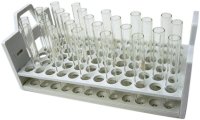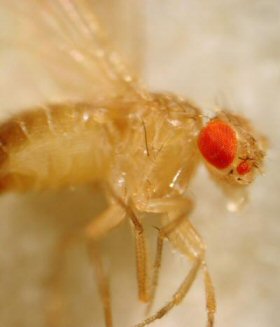
Clinical tests began today of a novel vaccine directed at the three most globally important HIV subtypes, or clades. Developed by scientists at the Dale and Betty Bumpers Vaccine Research Center (VRC), part of the National Institute of Allergy and Infectious Diseases (NIAID), the vaccine incorporates HIV genetic material from clades A, B and C, which cause about 90 percent of all HIV infections around the world.
“This is the first multigene, multiclade HIV vaccine to enter human trials,” notes NIAID Director Anthony S. Fauci, M.D. “It marks an important milestone in our search for a single vaccine that targets U.S. subtypes of HIV as well as clades causing the global epidemic,” he adds.
“This trial begins a process that we hope will culminate in a globally effective HIV vaccine,” says Gary Nabel, M.D., Ph.D., who heads the VRC. “The first step is to develop a multiclade vaccine. If our candidate elicits an effective immune response and proves safe in clinical testing, we will include additional components in subsequent trials in hopes of boosting this response.
The trial vaccine is a DNA vaccine, a kind shown to be very safe in previous clinical trials. It incorporates parts of four HIV genes. Three of these vaccine components are modified versions of HIV genes called gag, pol and nef taken from clade B, the subtype that predominates in Europe and North America. The fourth vaccine component is derived from an HIV gene named env.
The env gene codes for a protein on the outer coat of the virus that allows it to recognize and attach to human cells. VRC scientists are the first to combine modified env from clades A and C, which are the most common in Africa, as well as from clade B. A single vaccine combining multiple env components from different HIV subtypes could, in theory, be effective in many places in the world.
While these gene fragments can stimulate an immune response, they cannot reconstitute themselves into an infectious virus. A person cannot become infected with HIV from this vaccine, Dr. Nabel emphasizes.
Efforts to develop a broadly effective vaccine against HIV are complicated not only by the many clades, but also by the virus’ ability to elude immune system defenses through rapid mutation. “Any HIV vaccine must hit a constantly moving target,” says Dr. Nabel. “Essentially, we are trying to enlarge that target through a multiclade vaccine.” Researchers do not yet know if a multiclade vaccine will be more effective than one based on a single clade. “That is one question we hope our vaccine trials will eventually answer,” notes Dr. Nabel.
The public plays a critical role in this ongoing research, says Barney Graham, M.D., Ph.D., chief of the VRC’s clinical trials core and lead investigator in the multiclade vaccine trial. “We want the community to understand and support the process of vaccine development so that together we can attain the goal of stopping or slowing the AIDS pandemic,” he says. “Although thousands have already volunteered to take part in HIV vaccine trials, many more are needed. The importance of community participation cannot be overemphasized,” says Dr. Graham.
The first phase of the trial, which is being conducted at the National Institutes of Health in Bethesda, MD, is meant to determine the vaccine’s safety and will enroll 50 healthy, HIV-negative volunteers. Following an extensive informed consent process, volunteers, who must be between 18 and 40 years old to participate, will be vaccinated with either the test vaccine or an inactive saline solution in a series of increasing doses. Neither the participants nor the researchers will know which group a participant is in. During the yearlong trial, scientists will assess the vaccine’s safety and note if it induces any immune response in the vaccinees. Expanded tests conducted through NIAID’s HIV Vaccine Trials Network are planned for several domestic sites as well as sites in Haiti and South Africa.

















Comments are closed.